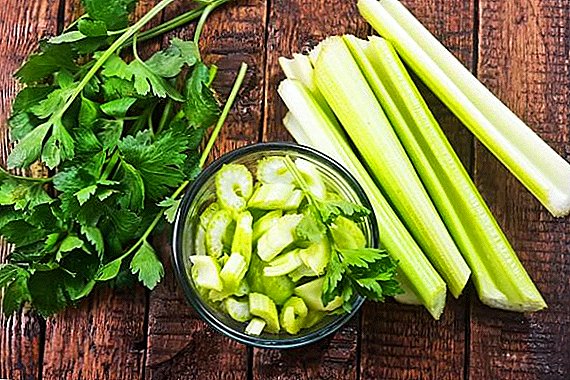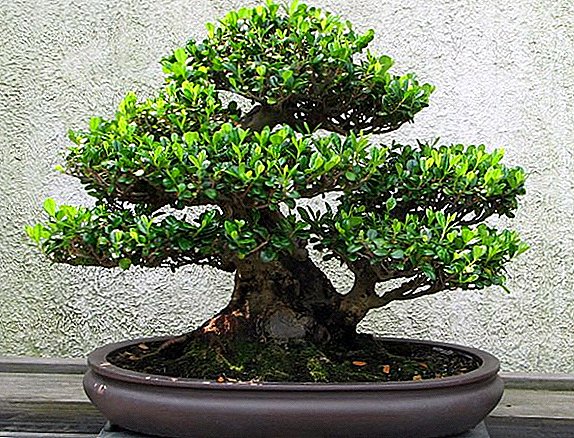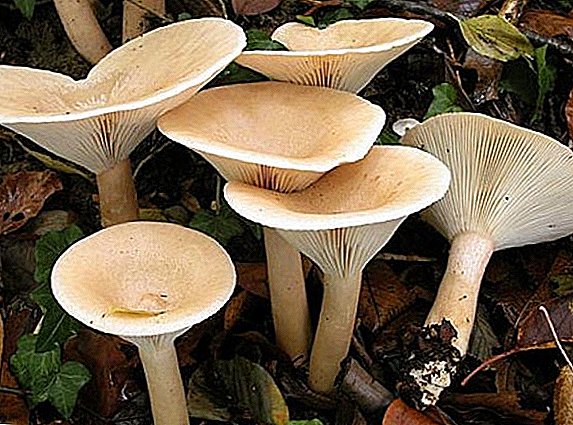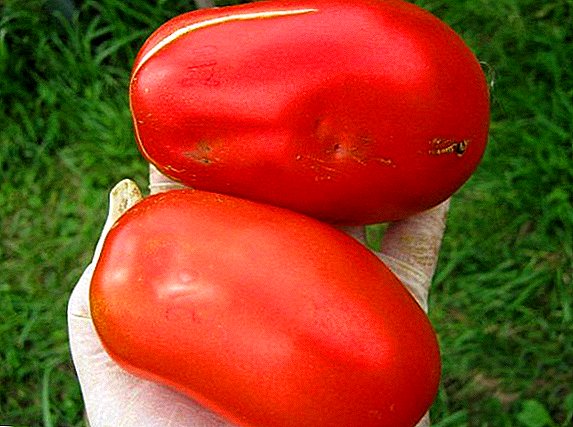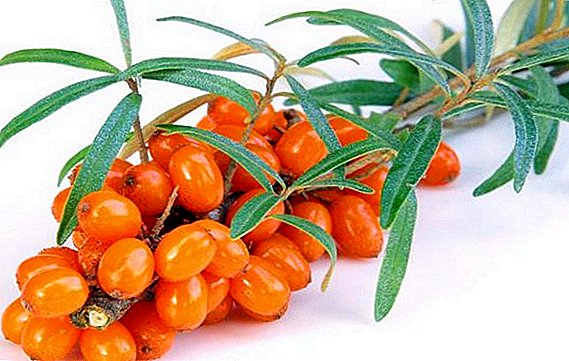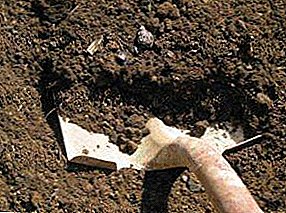
Agave, grown by our housewives as an indoor flower, belongs to the Agave family, whose habitat is arid areas of Central America.
Succulent got its name in honor of the name of one of the daughters of the local king.
The literal translation from the Greek states that agave "noble and wonderful."
Rod has about three hundred independent species. But it is precisely the healing properties of blue agave, as well as American, that are more often popular in traditional medicine.
The word "Mexico" is defined as "the place of the agave," and the bush itself recognized as national treasure of this country.
Agave is a herbaceous rosette perennial, which belongs to the succulents. The leaf is thick and fleshy, its pommel is curved with a regular arc.
In some species, at the very edge of the leaf there is a thorn not less than 2 cm in length. Along the edges of the leaf plate are smaller, but no less sharp spikes.
The color of the socket is green, with a visible bluish bloom, which can be matte or waxy. Under natural conditions, the shrub reaches three meters in diameter, in the conditions of an apartment - no more than 50 cm. Caring for Agave is not complicated, the plant is unpretentious.
The plant is very fond of light, and in the summer it is desirable to leave it in the fresh air.
In the cold season, the flower is at rest, so the ambient temperature should not exceed 11C.
Medicinal properties
 Agave flower, medicinal properties are used for the manufacture of medicines.
Agave flower, medicinal properties are used for the manufacture of medicines.
Agave preparations are useful for treating diseases. nervous system.
They are able to arrest the symptoms of the most common types. neuralgiaeg intercostal or viral.
Tincture on agave improves metabolism, can remove excess fluid from the body.
Creams with agave heal tissue after eczema, urticaria and other forms of allergic rashes.
Agave healing, plant sap treat sore throat, indigestion and poor bile flow.
Usually used old leaves, which are suitable both as an external means, and for the manufacture of oral forms of drugs.
Cut sheet can be applied to the body with an abscess, inflammation of the sciatic or trigeminal nerve.
During treatment, maximum caution is needed because agave juice with prolonged exposure to the skin may cause burn.
To remove the hives that appear after the juice, on the inflamed place apply fresh cottage cheese or process leaf application sites with quality vegetable oil.
Use in traditional medicine
 Before using agave as a medicine, you need to get consultation with a doctor.
Before using agave as a medicine, you need to get consultation with a doctor.
In addition, people often confuse agave and aloe with each other, which, although both belong to succulents, possess completely different medicinal qualities.
Useful properties often used as a remedy. gallbladder disease, and aloe with this disease categorically contraindicated.
Diseases for which apply agave
Freshly picked leaves have been used for pulling pus from boils, boils or sciatica. The leaves are cut and put on the sore spot with a juicy side, after which the compress is wrapped with a warming bandage;
Juice in equal proportions is mixed with the juice of meadow wormwood, and consumed with 15 drops of water. Effectively this medicine with disorders of the gastrointestinal tract;
A sheet that has been disassembled into fibers and dried must be thoroughly crushed and sifted. Store the resulting raw materials in a dry place. take 0.10 g three times a day for gout;
To relieve the symptoms of sciatica and sciatica leaves are used. They are finely chopped and mixed with any natural fat in a 1: 2 ratio. This ointment needs a sore spot. rub before bedtime.
If you exceed the dosage, then on the site treated with ointment, blisters, itching and burns may appear. You can not repeat the procedure until complete healing of the skin. Reducing the risk of developing allergies, on the day after the application of agave, the treated place is smeared with any fermented milk product;
Reducing the risk of developing allergies, on the day after the application of agave, the treated place is smeared with any fermented milk product;
Grated root preparations are used in the treatment of STDs, and mucus from the root can relieve toothaches with periodontal disease;
For the treatment of gout 10 g of fresh green mass is poured 100 ml of high-quality vodka and insist for at least ten days in a darkened place. Filter and take 15 drops directly before eating;
Mix the juice and olive oil in a ratio of 1: 2, this composition is impregnated with a gauze napkin and applied it to boils. Top compress should be covered with a tight and elastic bandage. It is beautiful wound healing agent;
In case of bronchial asthma, you need to mix agave juice and liquid honey in a 1: 1 ratio and take this mixture one dessert spoon 30 minutes before a meal. four times a day.
The same medicine can be used in the treatment of tuberculosis or acute bronchitis;
By mixing the juice obtained from 100 g of agave leaves, the juice of one large lemon, 300 g of finely chopped walnut kernels and 200 g of liquid honey, an excellent remedy is obtained to raise the level of immunity.
Take one dessert spoon at least five times a day, be sure to half an hour before meals;
Mexicans use agave juice, whose properties as a drug of first choice when bitten by a snake or poisonous spider;  For the treatment of gastrointestinal infections from the succulent prepare the infusion.
For the treatment of gastrointestinal infections from the succulent prepare the infusion.
Take a few small leaves, chop them and completely fill with water.
Insist at least 7 hours, then filter and dilute with water by 50%.
Take half a teaspoon before each meal;
For the same purpose, the tincture is combined with wormwood decoction. In a ratio of 5: 1. But you can only take this medicine. under the supervision of a physician;
For rheumatism, take one large piece of paper and fill it with 500ml of vodka. Mix the mixture carefully and keep at least 10 days in a dim room, at a temperature of 22C.
Use as a local rubbing. Keep only in dark glass containers.
What parts of the plant are used in traditional medicine?
Juice is perfect for making honey, wine and sugar from Agave. Fleshy stem eat raw and baked.
Mexican Indians used juice for the treatment of open wounds, trophic ulcers and inflammation in the ureter.
This remedy with a laxative and diuretic effect is also very effective against abrasions.
Foliage is used for compresses with sciatica, radiculitis, purulent wounds and boils. Or as an oral medication for diseases of internal organs, for example, with gastritis and pneumonia.
You can take only those leaves, whose age is four years.
Contraindications
 Freshly squeezed juice is a strong irritant due to its caustic properties.
Freshly squeezed juice is a strong irritant due to its caustic properties.
Before oral treatment it is necessary properly diluted with water.
Can not be treated with agave pregnant and lactating womenas well as those who are only planning to have a child.
The juice of the plant contains volatile, which inhibit the function of spermatogenesis.
It is not recommended to use drugs from this plant. for people with sensitive skinbecause they can get chemical burn.
Before applying compresses, it is imperative to check the threshold of sensitivity by dropping a drop of pure juice on the skin in the wrist area.
Brought by sailors from the shores of America, agave could remain for a long time only an ornamental plant, if it were not for the fragmentary information that the sailors gathered from the natives.
However, the chemical composition of the juice fully not studied yet, although it can be argued that the aboveground part of the bush contains almost all known groups of vitamins, micro and macro elements.
Agave is a plant whose healing properties no doubt will always be in demand.


